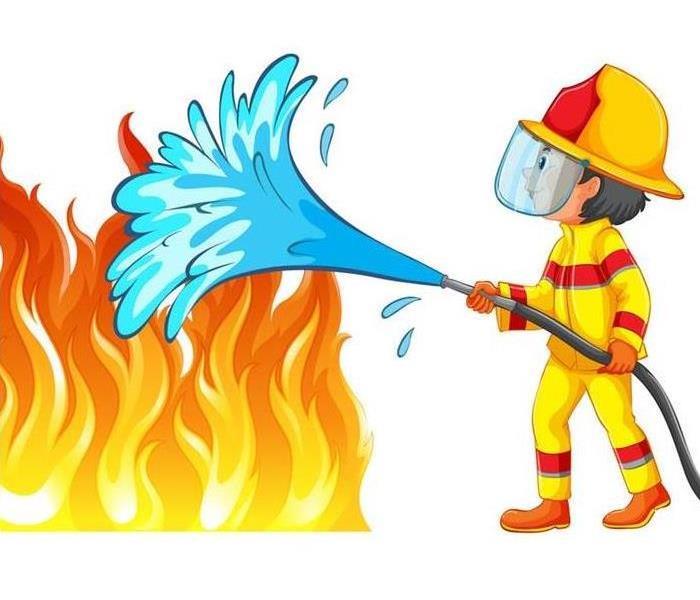Different Classes of Fires
5/23/2023 (Permalink)
Fires can be classified into different categories based on the materials involved, providing valuable information about their causes and behavior. Here are the various classes of fires:
Class A - Fires involving solid materials like wood, paper, or textiles. These materials absorb energy from external ignition sources and can ignite through conduction, convection, radiation, or internal heat-producing processes.
Class B - Fires involving flammable liquids such as petrol, diesel, or oils. Using water extinguishers on flammable liquid fires is not recommended as it can spread the liquid and worsen the situation. Water extinguishers are suitable for environments with large amounts of combustible materials, like warehouses or storage facilities.
Class C - Fires involving gases. These fires occur when a flammable or combustible material, combined with an oxidizer like oxygen, is exposed to heat or a temperature above the fuel's flashpoint.
Class D - Fires involving metals. During a fire, the mechanical properties of steel can deteriorate under high temperatures. Structural steel members may deform, but they regain their pre-fire properties after the fire is extinguished.
Class E - Fires involving live electrical apparatus. Although not technically recognized as 'Class E,' this term is used for convenience. Faulty electrical outlets, old appliances, or faulty cords, receptacles, and switches can cause electrical fires.
Class F - Fires involving grease. Grease fires occur when cooking oil becomes too hot, reaching its smoking point and eventually catching fire. Most vegetable oils have a smoking point around 450°F, while animal fats like lard or goose fat will start smoking around 375°F.
In the event of a fire and requiring emergency services, please contact SERVPRO of Dubuque. Our dedicated team will swiftly respond to make the situation "Like it never even happened."






 24/7 Emergency Service
24/7 Emergency Service